 Written by Dr. Eric Wood, ND, MA
Written by Dr. Eric Wood, ND, MA
“If you want to find the secrets of the universe, think in terms of energy, frequency, and vibration.” ~ Nikola Tesla
Life is vibration. The human body, like all matter, vibrates all the time at differing frequencies. When the numerous frequencies of sound or music are converted to specific vibrations and applied to our bodies, this natural, non-invasive therapy can help bring us into a state of healthy resonance. Working in concert with the body to achieve healing at the deepest, cellular level of our being, the 5 therapies of vibration, sound, vibroacoustic, percussive, and PEMF can deliver optimal health. Read on to learn how these innovative Therapeutic Modalities products can help and how to choose the best one to meet your needs.
Table of Contents |
Every therapeutic modality we included in this review uses some type of repeated frequency and/or vibrational wavelength to achieve healing benefits. Whether it’s healing a wound or breathing, our bodies continuously use energy at the cellular level. Because the body is always moving, micro-vibrations produced by the cells essentially transmit, receive and hum with energy. This makes us more susceptible to the positive benefits of vibrational and biomagnetic therapies like the five modalities explained in this article.
.png)
Although vibration, sound, vibroacoustic, percussive, and PEMF therapies all use certain levels of frequencies and waves to optimize healing and often overlap in the conditions they treat, these different modalities do offer some unique characteristics. Whole-body vibration therapy is ideal for more involved and serious medical conditions, while targeted vibration therapy offers effective relief for smaller body areas. Percussive therapy is best suited for tight or rigid muscles, ligaments, and fascia, enhancing range of motion and flexibility, and alleviating muscle soreness. Sound therapy is often used for mitigating stress, empowering the brain to increase cognition, mental acuity, and memory, along with helping ease psychological disorders. Vibroacoustic therapy enhances well-being and inner peace, a useful tool for pain and mood disorders, while PEMF therapy is especially proficient with painful conditions, decreasing inflammation as it enhances energy and vitality.
Choosing the best therapy modality is dependent on your specific symptoms and/or medical condition, your budget, and what kind of therapy you may enjoy the most.
Ideal therapy for stroke recovery, the elderly, and others challenged by exercise, whole-body vibration improves muscle strength, balance, and gait speed, while it also promotes weight loss and healthier bones. Both whole-body and targeted vibration reduce pain. This therapy can be achieved by using Vibration Plates!
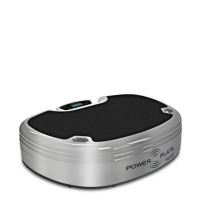 | Power Plate Compact Vibration Plate | MOVE View Product |
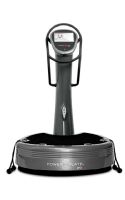 | Power Plate Pro7 Full Body Vibration Plate View Product |
If you love relaxing to music, you’ll love Vibroacoustic Therapy Products. Intensifying and enhancing the popular pastime, this innovative sound technology provides a wide range of benefits for both psychological and physiological wellness. Alleviating stress in every part of the body, vibroacoustic therapy (VAT) helps to reduce pain, discomfort, and negative moods.
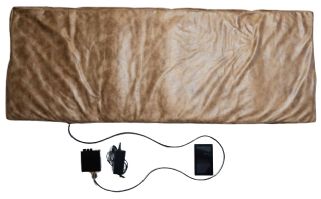 | Vibroacoustic Therapy Vibrating Mat by SoundWell View Product |
Providing exceptional pain and inflammation relief, PEMF Therapy Devices are useful for a wide range of conditions that cause discomfort, such as injury, arthritis, cancer, surgery, and chronic back issues. It’s ideal for anyone struggling with fatigue often associated with painful conditions.
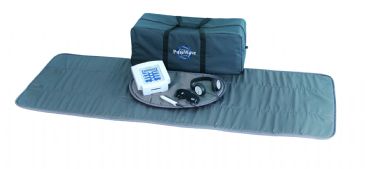 | PureWave PEMF Full-Body PEMI Mat System View Product |
The repetitive drilling vibrational massage that percussive therapy delivers is perfect for chronic pain, muscle tension, and limited range of motion. This stimulating therapy is also deeply relaxing by penetrating the body’s soft tissues up to an inch deep. Check out all of our Massagers.
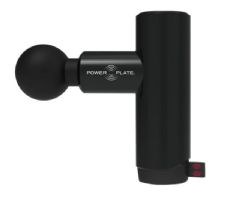 | Power Plate Mini+ Handheld Massager View Product |
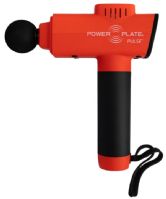 | Power Plate Pulse Percussion Massager View Product |
~1.jpg)
As one of the most relaxing treatments for both mind and body, sound therapy helps to lower hypertension and reduces the risk of coronary artery disease and strokes. Relaxing and calming, sound therapy helps with pain management along with easing headaches, insomnia, anxiety, and depression.
As more research becomes available to prove its viability, vibration therapy (VT) has been gaining interest among people living with Parkinson’s disease, stroke recovery, spinal cord injury (SCI), multiple sclerosis (MS), and other neurological diseases, as well as conditions that cause spasticity, lower bone density, and the loss of muscle mass and strength. Utilizing low-intensity vibration via whole-body vibration plates or smaller, targeted devices that both send anabolic mechanical signals to the musculotendinous and bone systems within the body, VT helps to stimulate muscle contraction, relaxation, and the stretch reflex, along with promoting healthy bone formation by optimizing osteoblast formation. NASA continues to employ this therapy for their astronauts to help prevent bone loss, while professional athletes and others often use it to prevent delayed-onset muscle soreness (DOMS). And in other countries, forms of sound-based therapy like sonotherapy have even been used with other serious conditions like even cancer.
~1.jpg)
Combining elements of both vibration therapy and sound therapy, vibroacoustic therapy (VAT) is often utilized for both physical and psychological applications. Delivering therapeutic music and low frequencies through specially-embedded speakers called transducers, this is heard by the ears as sound and is felt by the body as vibration. Stimulating nerve bundles along the spine, through the limbic system, and up into the brainstem, this vibrotactile input also stimulates the medulla, activating the auditory nerve connecting with all of the body’s muscles. Mood-lifting chemicals flood the brain, signaling the body to relax and de-stress. Additionally, the low frequencies of vibroacoustic therapy relax the body’s tissues, dilate the blood vessels, and open the lymphatic pathways, resulting in an increased ability for the body to heal in all ways. Demonstrating positive outcomes on several measures, VAT is ideal for treating pain and mood disorders.
.jpg)
Pulsed electromagnetic field technology (PEMF) helps our bodies to sustain optimal physiological function, producing electromagnetic fields with various frequencies, waveforms, and pulses at the lowest end of the spectrum to ensure safety along with efficacy. Directly stimulating electrical activity within the muscle tissues that these electromagnetic fields interact with, PEMF therapy devices charge the cells, resulting in the highest performance, functionality, and recovery, enhancing the body’s vitality. Research has shown that PEMF therapy has been just as effective as a low-to-moderate dose of an opioid analgesic in reducing pain, while it also decreases the production of free radicals (anti-oxidative) and stimulates osteoblast production for faster bone healing, along with mitigating inflammation.
Utilizing repetitive, rapid bursts of pressure combined with vibration therapy, percussive therapy applies this rhythmic, thumping pressure directly to the soft tissues of the body, relieving pain, loosening tension, enhancing range of motion, and working out tight knots in the muscles. Basically taking the place of a massage therapist performing deep tissue massage, which is often painful and uncomfortable, percussive therapy sort of punches the sore muscles, stimulating the nerve receptors and desensitizing the area, resulting in pain reduction both during and after therapy. Its unique hammering action also reaches more deeply than human hands or foam rollers can, relieving deep-down knots that hide within the layers of fascia and muscle, and possibly even deeply trapped emotions and trauma, according to recent research.
.jpg)
Covering a vast range of treatments from sound baths to music therapy, sound therapy is a form of sensory therapy that uses specific sound and music frequencies for healing on the cellular level. Specifically utilized to affect your brainwaves positively, sound therapy enables people to listen to rhythmic sounds and sound vibrations at certain frequencies, helping to align the patterns of electrical activity created by billions of neural cells in our brains to the same frequencies. This brainwave entrainment assists users of sound therapy to better harness the power of the mind, resulting in improved healing of both the mind and body. Auditory beat stimulation, such as binaural beats that play two separate tones in each ear, is perceived as a single, almost euphoric tone by the brain. Such examples illustrate that medicine is finally starting to incorporate and draw upon the field and research in Music Therapy, which has been a formal field of study and registered discipline in academic institutions for decades.
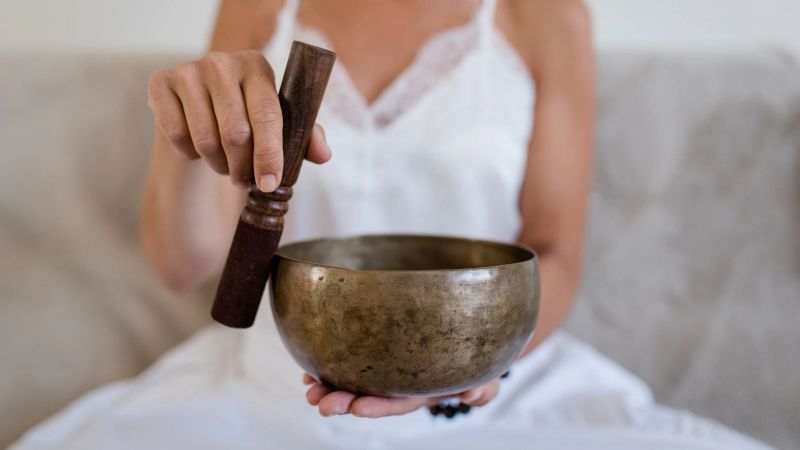
Although it may be hard to believe that therapeutic modalities utilizing certain frequencies and vibrations are effective for healing, previously published and ongoing research indicates that these therapies are real. Enhancing the body’s natural vitality and self-healing mechanisms, vibration, sound, vibroacoustic, percussive, and PEMF therapies have all been demonstrated to be effective methods for treating both psychological and physiological conditions.
Thanks for taking the time to learn more about these fascinating healing modalities and how you can incorporate these therapies into your life to achieve optimal health or your healing practice to better help your clients.
We invite you to peruse our comprehensive selection of Therapeutic Modalities Products. Be sure to check out more Vibration And Vibroacoustic Therapy articles on our blog, Caregiver University.

Dr. Wood is a licensed naturopathic doctor in Washington D.C. and founder of Visionary Health. A graduate of the Canadian College of Naturopathic Medicine, Dr. Wood is a professor at John Patrick University in the Integrative and Functional Medicine Department as well as an adjunct professor at the American College of Healthcare Sciences in Holistic Nutrition. He began his career as a specialty physician for two leading supplement US companies, Neuroscience Inc. and Life Extension. Over his fifteen-year career in integrative and holistic medicine, he has worked in diverse capacities including as an educator; writer; medical advisor, consultant and formulator for supplement companies and treatment centers in the US and the EU; public speaker; and clinician. He has long been a practicing advocate of lifestyle medicine, fitness and mind body medicine approaches initially spurred by aging family members not getting help from traditional medicine and is passionate about innovating and bringing natural and integrative medicine to the masses!